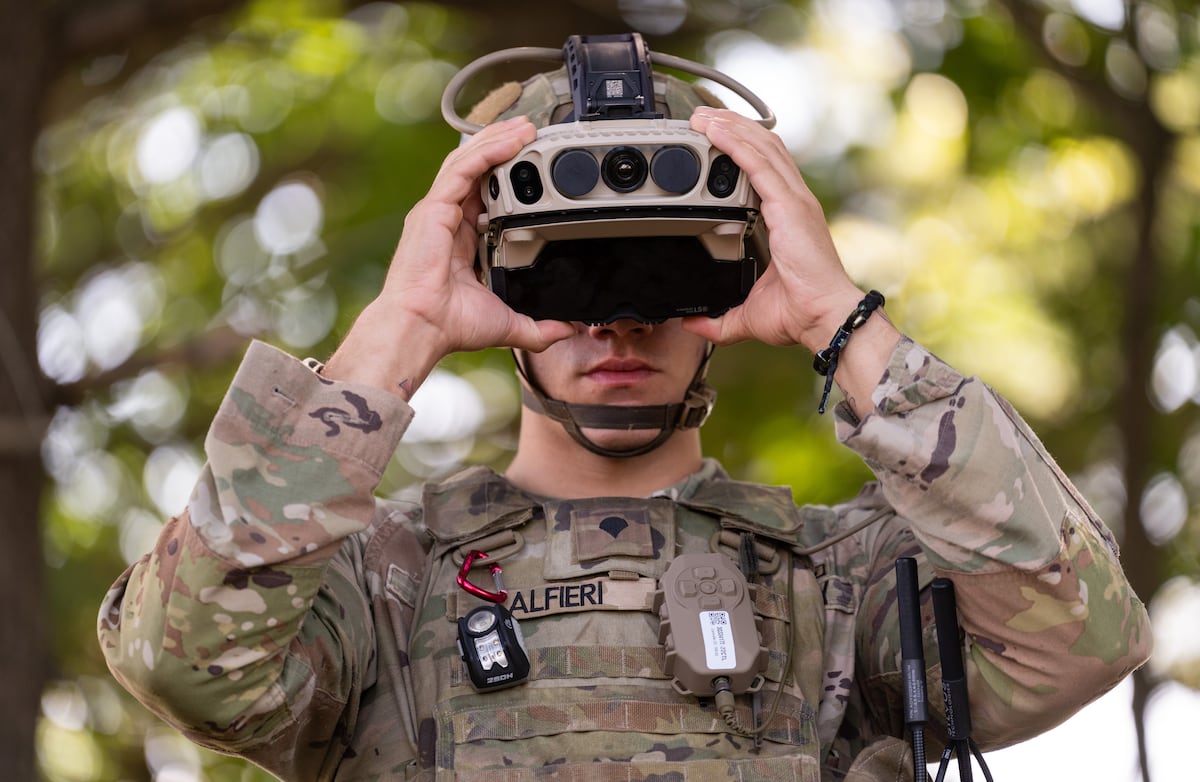As the Army continues a shift from dozens of legacy human resources systems to its Integrated Personnel and Pay System-Army (IPPS-A), emphasizing mobile documents and transactions, it is examining how artificial intelligence could further lower soldiers’ paperwork.
IPPS-A active-duty administrators told reporters at the Association of the United States Army’s annual meeting on Tuesday they planned a “disruptive technology pilot” in the coming year. Known as the HR Intelligent Engagement Platform, it is designed to “push the envelope” on building smart tech into existing processes, Col. Matt Paul, project manager for IPPS-A, said.
“Were using the Army’s open solicitation and going through a competitive down-select process to do some prototyping, to determine, how can we use AI – we’ve got all these disparate HR and non-HR related systems out there in the wild – how can we use AI to bridge that?” he said.
“So, if I’m a soldier and I’m just on a prompt, how do I use a single prompt to get the information that I need?” he asked.
An agentic AI tool being evaluated could offer soldiers a help desk within the IPPS-A mobile app to troubleshoot issues and help locate functions, Paul said. In the future, he said, AI may take over some form-writing entirely, he said.
“Next level would be how to actually initiate HR transactions from a prompt,” he said. “I’m Col. Matthew Paul, and I need a leave form, and then it might ask me some questions, and then I might respond, and at the end of that conversation, I may have an approved leave form, all through AI prompting. I don’t know if we’re going to get there, but that’s the whole point of the pilot, to push the envelope, to see how far we can get.”
The IPPS-A team is looking to award a contract for the pilot program this year, Paul said, but does not have a fixed timeline for its execution.
“It could be three months. It could be eight months,” he said. “We’re trying to maximize flexibility and go where the technology leads us.”
IPPS-A, an investment of nearly $600 million for the Army, went live across the service in January 2023 after several years of rollout delays. While the system has prompted its share of user complaints, particularly in its early days, officials said they are continually pushing out updates and soliciting feedback as they absorb new processes from existing systems.
In May, IPPS-A took over creation of DD-214 discharge papers, allowing soldiers to see draft DD-214s on their mobile devices and correct errors before leaving the service.
“When we released it, it was a minimal viable product,” Col. Becky Lust, director of the Army’s Functional Management Division, said.
“Since May … I’m not sure there’s been a release that we haven’t added some functionality,” she said.
In coming months, IPPS-A officials are also looking to take over the process of checking soldiers into new units and detaching them from old ones, a task that would require multiple stops at physical locations for paperwork processing and approval. Within eight months, Paul and Lust said, they hope to launch a new, mobile-based workflow.
Soldiers “would be able to show up at the location and maybe scan a QR code that says that I’m here, and that will trigger the [Military Personnel Division] to initiate in-processing. And then the soldier will get what we call activity guides in IPPS-A, and that will guide him through each of the spots that they want him to visit,” Lust said. “But he visits them all virtually, so he gets the information about that installation, and he can click yes or no if there’s questions that they need. And then he doesn’t really have to go to multiple spots … And then he’s building readiness for the Army, because then he will be able to go to his unit much quicker.”
Also in the works, with the help of soldier officer, enlisted and warrant officer working groups assembled over the summer, are improvements to the soldier talent profile functionality on the app that will allow troops to put all their relevant experiences and skills in one place for future civilian job hunts. Updates on that project will be pushed out over the next 90 days, Lust said.

.jpeg)




















.jpeg)













 English (US) ·
English (US) ·